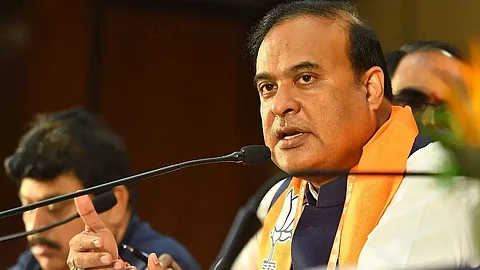
- Home
- Live Blog
- Breaking News
- Top Headlines
- Cities
- NE News
- Sentinel Media
- Sports
- Education
- Jobs

Assam Chief Minister Dr Himanta Biswa Sarma stated a few days ago that his government would place the Tiwari Commission Report on the 1983 Assembly election violence in the State Assembly in November. The Commission, headed by Tribhuvan Prasad Tiwari, a senior IAS officer of the UP cadre, was constituted on July 13, 1983, by the then state Chief Minister Hiteswar Saikia. The Commission’s mandate was to “look into the circumstances leading to the disturbances which took place in Assam during January-April 1983, to examine the measures taken by the authorities concerned to anticipate, prevent and deal with these disturbances, to indicate whether there were any failures by any authority or individual, and to suggest measures to prevent recurrence of such incidents in future.” Though the Commission had submitted its report to the Government in May 1984, the short-lived Saikia government, for one reason or another, did not place it in the State Assembly. None of the four Chief Ministers who came after Saikia in the post-1985 period – Prafulla Kumar Mahanta, Tarun Gogoi and Sarbananda Sonowal – ever considered it worthwhile to place the report in the State Assembly. Saikia himself was CM again during 1991-96, but the report was kept aside. This led to all kinds of speculations in the past four decades, and certain lobbies also tried to dub it as a biased report. Some others have also run a deliberate campaign – and it has been renewed in the past few days – to call it the ‘Nellie Massacre Report’, with some bad intention in mind. As is clear from the Commission’s mandate, the report is about the overall situation leading to large-scale violence during the run-up to the Assam elections held in February 1983. Looking back, one will find that the February 1983 elections in Assam (for the Assembly as well as the 14 Lok Sabha seats) were held forcibly against the will of the people. The Assam Movement demanding detection and deportation of illegal migrants was then going on, and the AASU, which led the movement, demanded that elections should not be held on the basis of electoral rolls which contained names of thousands of illegal migrants. Indira Gandhi’s Congress government, however, was bent on holding the election just because it would otherwise lead to a constitutional crisis. In such a situation, the state government employees refused to cooperate in the election, and the Centre had to send officers and employees from other states to run the process. This led to peaceful resistance all over. But an arrogant Congress regime compelled the Election Commission to hold the election by force. Large-scale deployment of central forces led to numerous incidents of indiscriminate firing upon peaceful protestors, leading to the death of over 300 students and young men in just ten or twelve days. The Nellie massacre, on the other hand, took place after the polling was over. But, while certain forces have always tried to give the Assam Movement as well as the 1983 violence a communal colour, the Tiwari Commission had in its report understood to have clearly stated that it would be entirely unwarranted to give a communal colour to the incidents which it enquired into, and that all sections of the society had suffered as a result of the senseless violence. While one section from outside the state has always been working overtime to describe the Assam Movement against illegal migrants as an anti-Muslim or communally driven movement, it is unfortunate that there are also a handful of people, including a couple of self-styled intellectuals, who too occasionally want to project it in the same manner. It is easy to pass comments without understanding the impact of the dangerous demographic invasion which Assam has been facing since the first decade of the twentieth century when the province was clubbed with Eastern Bengal for a few years. As far as the 1983 violence is concerned, it is a well-established fact that the victims did not belong to one religious, linguistic or ethnic group. In some places, the perpetrators were Assamese and the victims were Bengali-speaking people, both Hindus and Muslims. In some other places, the attackers were Bengali-speaking Muslims, and the victims were Assamese, irrespective of whether they were non-tribals, tribals or Assamese-speaking Muslims. In some other incidents, the violence took place between two groups of Assamese people. While the massacre of Nellie – where the victims were immigrant Muslims – has always been projected by a section of politicians, intellectuals and even journalists, the fact remains that in several incidents which occurred in Chamaria (South Kamrup), Nalbari and Kampur (in Nagaon district), the attackers were immigrant Muslims and the victims were indigenous people. It is expected that once the Tiwari Commission report is made public, a lot of misgivings, rumours and anti-Assamese campaigns will come to an end.